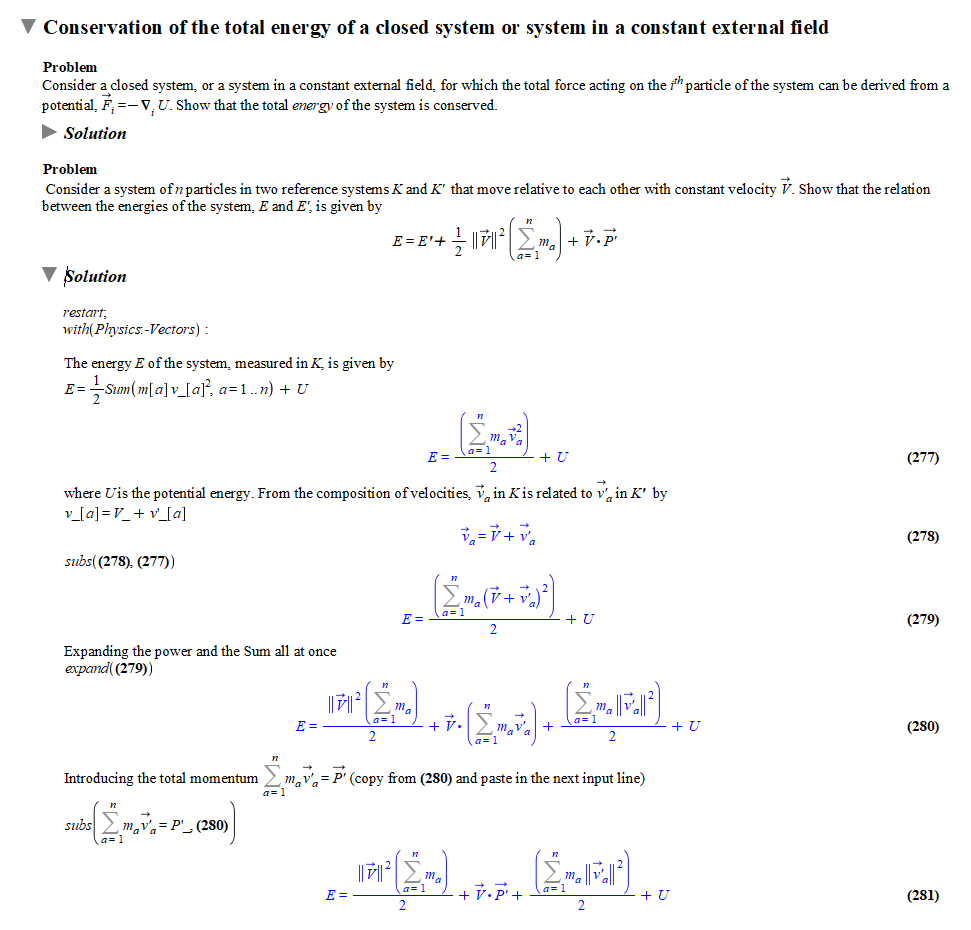Finally, math software that works for physics, too!
While math, engineering, and many science courses can easily leverage math software to ease the computational burden that can interfere with conceptual learning, the same hasn't always been true for physics. Tools designed for math haven't worked nearly as well in physics courses due to the subject's heavy use of notation and differing conventions.
But times have changed! In recent years, the math software Maple has added comprehensive support for the notation, conventions, and computations used by physicists, providing a natural environment for computer-assisted physics computations. Now you and your students can focus on concepts and problem-solving techniques, while leaving the time-consuming, error-prone algebraic computations and manipulations to Maple. With Maple, you can:
- Keep students focused on the physics, not the algebraic manipulations
- Work through more examples and more complex problems in class, without using up too much class time
- Explore what-if scenarios on-the-fly by modifying problems and easily recomputing the solutions
- Give students more opportunities to practice by giving them a tool that lets them try extra problems and check answers on their own
- Build student confidence by eliminating the mechanical mistakes that can lead to students incorrectly feeling that they have not understood the fundamentals when all they've really done is a lost a minus sign













 button in the toolbar to open the help page as a worksheet
button in the toolbar to open the help page as a worksheet as a function of time
as a function of time
